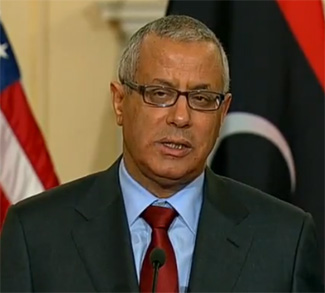On August 21, 2024, the Japanese Ministry of Defense (MoD) released an interim report that raised the issue of manpower shortages in the Japanese Self-Defense Forces (JSDF) and the steps needed to solve it. Among the measures recommended by the Study Committee on Fundamental Reinforcement of Human Resource Infrastructure, formed by the MoD in July 2024, was the use of artificial intelligence (AI), drones (unmanned aerial vehicles), and automation systems to compensate for manpower shortages in the armed forces. The recommendations come after a press conference held by the MoD in the same month where it announced that using AI would only streamline work within the MoD, but also focus on other areas, including “detection and identification of military targets, command and control, and logistic support.”
The use of emerging technology is clearly being viewed as a way for the Japanese government to get around its lack of personnel able to work in logistics and security. This lack of JSDF personnel was raised by previous governments out of concern that Japan’s military readiness will be eroded in the long run.
The defense ministry, however, noted that they acknowledge the limitations of using AI in a future scenario where it must be used: in situations without any precedent to go on, the AI mostly learns from past data. The policy called for the recruitment of specialists to handle issues with AI and to work out a strategy to develop a specialized workforce for AI systems. There were also concerns regarding potential misuse and overreliance. For example, Defense Minister Minoru Kihara spoke in a press conference in July about the challenges of fully adapting AI and other emerging tech in building up Japanese defense capabilities.
There are precedents of successful implementation of emerging technology to partially alleviate JSDF manpower shortages. One example is the rapid adoption of UAVs. The Defense Buildup Program (DBP) policy paper released on December 16, 2022 called for the adoption of UAVs to replace attack and observation helicopters in future assault and reconnaissance operations. This plan was made due to the growing lack of qualified personnel who can be trained to pilot such helicopters. The MoD is also looking into adopting a variety of drones, including unmanned ground vehicles (UGVs), unmanned surface vehicles (USVs), unmanned underwater vehicles (UUVs) for deployment alongside UAVs. Moreover, the JSDF is planning to have drones that can operate in conjunction with new fighter jets by 2035. Among the drones being looked at are the MQ-9 Reaper and the Bayraktar TB2 models. The JSDF currently operates Global Hawks and ScanEagle UAVs.
Since the Ukraine war, drones are viewed by various militaries as a critical new platform that is reshuffling battlefield tactics. It is due to this war that the MoD is contemplating using attack drones in the defense of the Nansei and Ryukyu islands. Examples of drones previously tested during fiscal year 2023 include the Harop and Switchblade loitering munitions.
Another significant example of emerging technology being used is through the launch of the Mogami-class frigate in the Japanese Maritime Self-Defense Forces (JMSDF), with the first ship officially commissioned in the JMSDF on April 2022. The frigate was constructed with Mitsubishi Heavy Industries (MHI) as the primary contractor and Mitsui Engineering & Shipbuilding as the subcontractor. The highlight of it is the crew size. The Mogami-class frigates were designed to be operated by a crew of 90 sailors, a stark reduction compared to its predecessors, the Abukama-class destroyer escort and the Asagiri-class destroyer. The Abukama-class requires 120 sailors to operate while the Asagiri-class requires 220 sailors.
What sets the Mogami-class apart is its use of automated systems, such as the advanced Combat Information Center (CIC). The feature allows sailors working in the CIC to handle various tasks, including steering, engineering, navigation, damage control, fire suppression, and communications. It also includes augmented reality technology in field navigation and asymmetric warfare.
Examples of emerging technologies employed in the Mogami-class frigates are now being used to draw up design concepts for the next wave of naval platforms. According to JMSDF Vice Admiral Imayoshi Shinichi, the 13DDX advanced destroyer will take design concepts based on the Mogami-class among other naval ships in JMSDF service. He further elaborates on the integration of various technology concepts, such as having more automated systems installed with the combat management system, using AI for situational awareness and decision-making, and the inclusion of novel weapon systems such as directed energy weapons (DEW) and electromagnetic (EM) rail guns. The MoD previously reported that a prototype test was conducted in October 2023 with an EM railgun mounted on the deck of the JS Asuka.
Plans to implement these design and technology concepts is a response to the guidelines raised in the Japanese National Security Strategy (NSS) policy paper released in December 2022. Among the areas raised by the NSS include information warfare, uncrewed systems, and logistics. Having the Mogami-class and the future 13DDX destroyers in service would serve as evidence to show that the JSDF is actively finding way to use technology to maintain military readiness and respond to new geopolitical threats.




